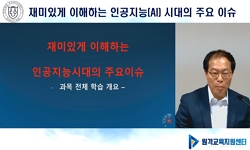Now is the time to look at how the language education required for foreign language majors should be conducted with the rapidly changing age of artificial intelligence. Translators today exist with computer-aided translation software, but nevertheless...
http://chineseinput.net/에서 pinyin(병음)방식으로 중국어를 변환할 수 있습니다.
변환된 중국어를 복사하여 사용하시면 됩니다.
- 中文 을 입력하시려면 zhongwen을 입력하시고 space를누르시면됩니다.
- 北京 을 입력하시려면 beijing을 입력하시고 space를 누르시면 됩니다.
https://www.riss.kr/link?id=A107985936
- 저자
- 발행기관
- 학술지명
- 권호사항
-
발행연도
2021
-
작성언어
-
- 주제어
-
KDC
747
-
등재정보
KCI등재
-
자료형태
학술저널
-
수록면
103-117(15쪽)
- DOI식별코드
- 제공처
-
0
상세조회 -
0
다운로드
부가정보
다국어 초록 (Multilingual Abstract)
Now is the time to look at how the language education required for foreign language majors should be conducted with the rapidly changing age of artificial intelligence. Translators today exist with computer-aided translation software, but nevertheless, humans remain an important part of the translation process, so we need to reflect on this. To this end, we first looked at various situations for translation, namely machine translation, CAT (Computer Aided Translation, Computer Assisted Translation), and AI (artificial intelligence). This will also be a factor to consider, as human attitudes toward foreign languages learning will certainly play a major role in the future of translation. In particular, since MTPE (Machine Translation Post-Editing) is a process in which the translator refines the machine translation result into the final translation result, it is necessary for translation education at the school site. Because, in the process of global companies all jumping into the global market and pursuing localization, the demand for translation is higher than ever before, and MTPE is desperately needed to solve this demand, and research and education on it will be more actively needed.
목차 (Table of Contents)
- I. Introduction II. MT (Machine Translation)1) and CAT (Computer-Aided Translation, Computer-Assisted Translation) III. Artificial Intelligence and Translation Issues IV. Pre-Editing and MTPE (Machine Translation Post-Editing) for translation education V. Conclusion and translational suggestion
- I. Introduction II. MT (Machine Translation)1) and CAT (Computer-Aided Translation, Computer-Assisted Translation) III. Artificial Intelligence and Translation Issues IV. Pre-Editing and MTPE (Machine Translation Post-Editing) for translation education V. Conclusion and translational suggestion
동일학술지(권/호) 다른 논문
-
대학영어 수업에서 시간제한이 영어독해와 번역활동에 끼치는 영향
- 한국통번역교육학회
- 마선미(Ma, SunMi)
- 2021
- KCI등재
-
통번역 교육을 위한 LMS 기반 온라인 콘텐츠 학습 운영의 효율성 제고(提高) 방안에 관한 소고
- 한국통번역교육학회
- 유선영(You, Seonyoung)
- 2021
- KCI등재
-
- 한국통번역교육학회
- 이광호(Lee, Kwangho)
- 2021
- KCI등재
-
- 한국통번역교육학회
- Cho
- 2021
- KCI등재





 KCI
KCI 스콜라
스콜라






